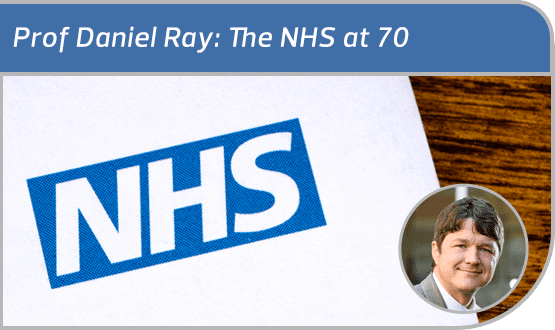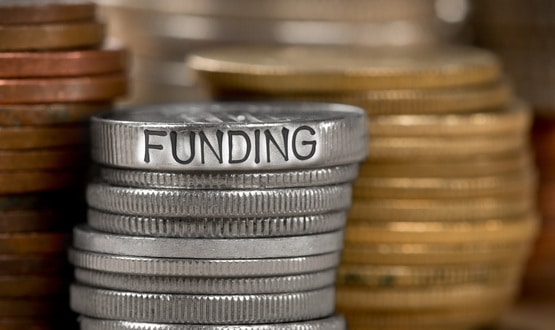Happy Birthday NHS: A look back at its digital milestones
- 5 July 2018

As NHS celebrates its 70th birthday today, professor Daniel Ray, director of data at NHS Digital, reflects on the three major milestones in data and technology that have impacted the health service and how digital could transform it still further.
I cannot help but turn to the Hospital Episodes Statistics (HES) when I look at how data played a part in shaping the NHS since it was first founded in 1948.
There is no disputing the power of HES as its sheer volume and depth is phenomenal, producing a world-leading, unique, database to support health and care research.
It is, quite simply, unique in the world and has contributed to the advancement of health and medicine across the globe.
These figures have been carefully collated and analysed since they first came into being in the 1980s and 1990s. HES is now one of the key buttresses in the NHS system and very much deserves to be celebrated in the lead-up to the NHS’s 70th birthday.
HES records every single admission to hospital, every attendance at accident and emergency and all outpatient appointments at NHS hospitals in England. It also includes private patients who are treated in NHS hospitals and care delivered in treatment centres including those in the dependent sector but still funded by the NHS.
The power of data
The data, which reveals trends and patterns in NHS hospital activity, is used for research and for planning health services. Disclosure control is strict so that patients’ confidentiality is always maintained.
The fact that hospitals got paid for specific numbers of patients treated through payment by results from 2004 onwards future-proofed the data, improving accuracy and quality.
A second significant step in boosting democracy and arming people’s ability to make their own decisions – something virtually unheard of seventy years ago – is, in my opinion, the transparency of data relating to how hospitals are performing.
Patients can now visualise and understand outcomes of treatment so they can make an informed decision as to which hospital they want to be treated in. Hospital ratings were introduced over the last 20 years, probably initially by the healthcare commission in the 2000s, and they work in a similar way that Ofsted reports do for schools.
Introduction of EPR
I would say the third significant impact of data over the past decades – which has taken place much more recently – is the introduction of electronic patient records, meaning that a patient’s journey in the health system is more accurately recorded and easily accessed.
The patient therefore can be given more effective care by having a digitised record.
This process began nearly 20 years ago but some hospitals have been able to make more progress on this than others. Obviously, sources of funding such as the Global Digital Exemplar programme has enabled this process to progress more quickly and we would like to see all hospitals digitised as soon as possible.
Global Digital Exemplars are internationally recognised NHS providers of exceptional care who use digital tools and data effectively and innovatively and who share their learning and experiences to enable trusts to follow in their footsteps as quickly and as effectively as possible.
The leap into the future
Looking ahead, the future of how data is going to inform research and decision-making is very interesting with new technologies on the horizon such as artificial intelligence. It is really important that new laws such as GDPR are respected so that we can continue to utilise data by maintaining patient trust.
I am really hoping that we can continue to use the data about people’s diagnosis and treatment to the same extent as we have done before because the volume, depth and quality of data is vital for research purposes.
AI is of course the second major factor in influencing the future course of the NHS. There are some amazing developments in AI that will support, and in some areas potentially replace, humans’ ability to detect conditions.
Currently we are building an avatar here in NHS Digital that will improve data access. It will enable us to store more data, safely and securely for research. There is no doubt in my mind that we need to provide safe and secure access to data more quickly and in new and innovative ways.
Finally, as healthcare becomes more integrated with social care , the use of data becomes even more essential.
Social care is becoming one of the greatest issues of modern society. It impacts on hospital care and it impacts on individuals and families in a major way. Again, data will lead the way as to how we can tackle these issues which are not going to go away any time soon.
Professor Daniel Ray is director of data at NHS Digital.





9 Comments
Fair enough on Wachter but have any actions been done? If so, where can I follow their progress. They certainly don’t appear on internet searches I’ve made recently. Wait a minute, just looked at Fit for 2020 and there are no names; just the promise of names.
The Wachter (2016) and ‘Fit for 2020’ (2017) Reports. Try to find any activity or names assigned on/to the dozens of actions in these reports. As ‘Chris’ said above of my report on the NHS debacle, it’s another case of ‘write the report, get the kudos and move on.’
Page 32 of ‘fit for 2020’, details ‘how to make it happen, – each action has an owner. I eagerly await all my health & care data identifying me in an holistic healthcare approach. This will save endless repetitive paper-based questions for staff & service-users/patients. Workforce training is explicitly stated.
NHS Number
PMIP (Pathology) / PACS / Electronic radiology reporting to GP (DIMP)/ Electronic Letters (XML Kettering) / Patient Access App (GP record)
Not to mention NHSmail , N3, IRC PAS, and all those reinventions of wheel we keep doing
Let’s move forward Terry.
.. and do a repeat Chris? Tell the police after a murder; ‘lets move on chaps, these things happen’. I don’t recommend retribution, which would have happened when I was in private IT, but lessons learned, documented and lessons applied. This sort of things has been happening in and outside the NHS for decades and is still happening. In about 2 decades, public sector has wasted very nearly £ 30 bn. on failed IT (Times, c. 2 or 3 years ago). That’s my money and I am not a happy bunny (poet too).
Surely the £ 13 bn NHS IT debacle project must qualify as a ‘milestone’?
Comments are closed.